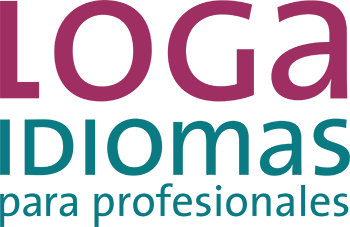Agustín Buraglia se dedica a las reformas integrales de vivienda y es estudiante de inglés. En 1990 se entrevistó con un cliente qatarí y supo que, si quería convencer y vender, primero debía dominar el idioma. Desde entonces, no ha dejado de estudiarlo. Estos días, en lugar de bucear en Internet, se está deleitando con una biografía de 1.500 páginas del ex primer ministro británico Winston Churchill, prueba de que el esfuerzo ha dado sus frutos. Define la cultura británica como elegante, por eso, esta conversación la cerrará con un cortés “Thank you”.
¿Cómo estudias inglés en Loga Idiomas?
Estudio inglés en la oficina, aunque a consecuencia del estado de alarma y hasta que se prolongue, lo estoy haciendo por Skype.
¿Cuál fue tu primer cliente internacional y cómo fue vuestra primera conversación?
Recuerdo que fue en el año 1990, con un empresario qatarí. En ese momento supe que tenía que desarrollar el inglés. En mi especialidad, reforma parcial e integral de viviendas, es indispensable dominarlo para ser asertivo. Desde entonces, el inglés es una asignatura de la vida.
Cuando participas en una reunión online, ¿te apoyas en recursos digitales como diccionarios o traductores para defenderte?
Siempre tengo a mano la aplicación WordReference en caso de necesitar traducir palabras concretas.

¿Qué frase o expresión te ayuda siempre en reuniones importantes?
Me gusta tener en mente: “Easy come, Easy go” (el dinero fácil, rápido se va). En estas circunstancias de confinamiento ha sido útil: “Business as usual” (seguimos trabajando con normalidad).
¿Sueles viajar por motivos laborales o para perfeccionar tu idioma?
Viajo frecuentemente. Fundamentalmente a Italia y Alemania, que es donde están mis principales proveedores y donde tienen sus fábricas. Además, he estado aprendiendo en Londres, Dublín, y Nueva York.
¿Has vivido malentendidos o situaciones desconcertantes a causa del idioma?
Sí, la primera vez que fui a estudiar inglés a Sheffield durante mi época universitaria. Unos chicos se referían a mí como “duck” (pato) y me mosqueaba. Al preguntarles me contaron que así es como se refieren a todos los chicos. Sería el equivalente a ‘chaval’ o ‘tío’.
Conversar con personas de otros países van mucho más allá del idioma. ¿Hay hábitos culturales que siempre tengas en cuenta?
Es curioso, pero en Inglaterra es habitual iniciar una conversación hablando del tiempo atmosférico. No me gusta, pero es necesario. Otra costumbre es tomar el té con leche durante las tardes.
Algo que siempre tengo presente es mantener la distancia al saludar, aunque siendo español es complicado.
¿Refuerzas tu aprendizaje con otros recursos?
Veo series en inglés y ahora estoy leyendo la biografía de Winston Churchill, una recomendación de mi profesor de inglés que me está resultando apasionante (¡y son 1500 páginas!). Además, he instalado en mi teléfono una aplicación de clases de inglés que uso en los momentos ociosos, quitándole tiempo a las redes sociales.
Eso sí, lo que me resulta más complicado es entender las canciones… No capto ni una.
¿Cuál es tu palabra favorita en inglés?
“Thank you”, no hay nada más representativo de este idioma tan elegante como la cortesía y la educación.



